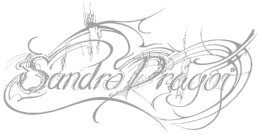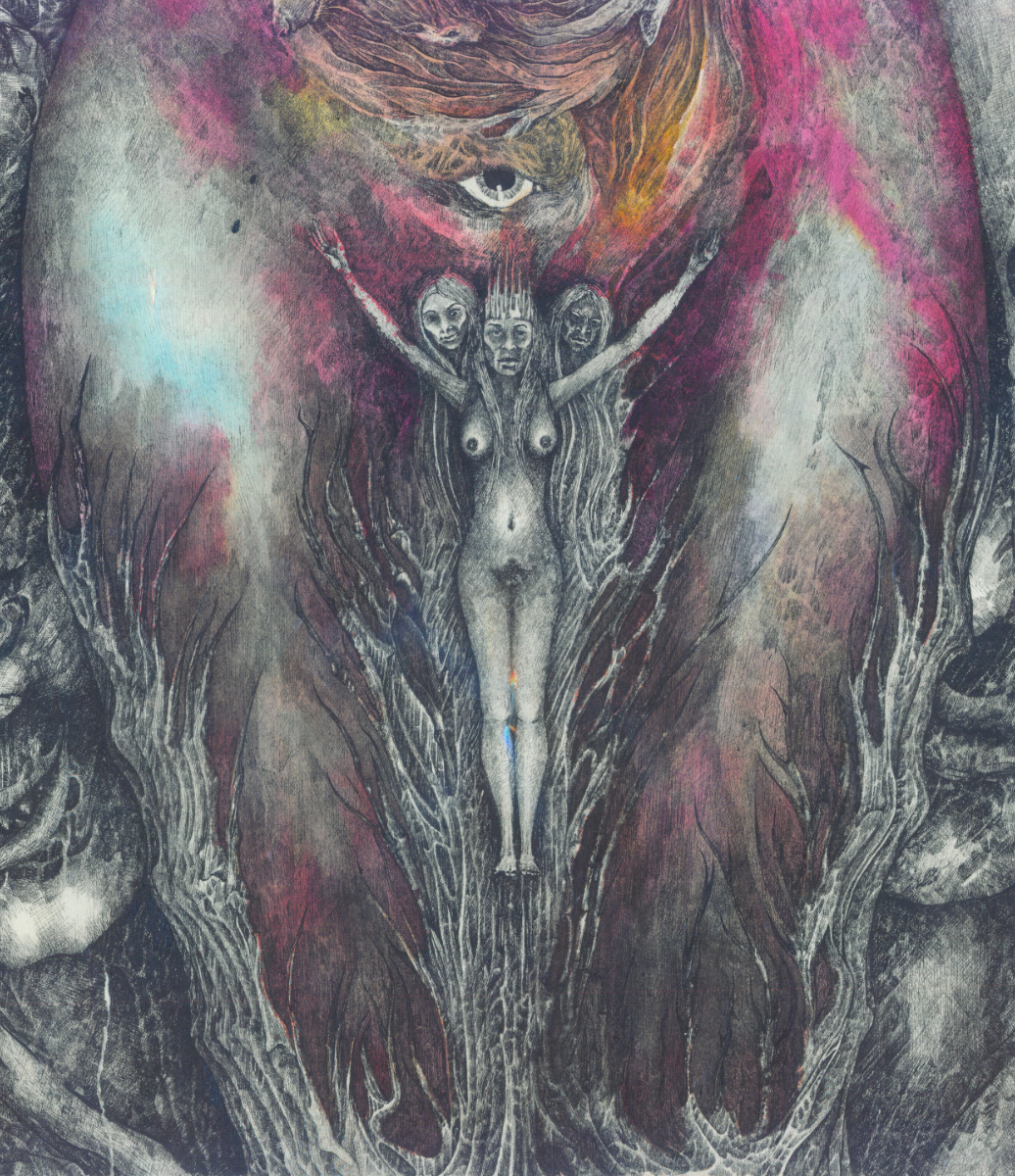Technique: colored ink drawing
Size without mounting: 510 × 720 mm
Date: 21.10.2019
Theme and motif of the work
Hecate is the ancient goddess very dear to me, and ever since painting of the work Intercourse with Hecate my fondness for this archetype only grew stronger. So I said to myself that it would be nice to portray her once more, also in that vilified form of hers. Originally a goddess with certain qualities in common with Athena, including wisdom and confidence, tenacity and pugnacity, Hecate also excels in purely feminine nature, being a triune woman – the moon goddess, the guardian of motherhood, and, last but not least, the vilified mother of demons, mistress of witches, wife of the devil, guardian of crossroads. (Crossroads were considered very bad places in the past, based on the belief that after death sinful souls would return in their dead bodies as vampires. Because of this the aim was to hang or bury them as far away from the town as possible, while making sure that another town would not complain about the proximity. Criminals, pickpockets, burglars, and murderers were thus hanged, caged, and buried at crossroads as a sort of compromise on the distance between towns.)
Psychoanalytical subtext of the artwork
Hecate therefore was originally a very meritorious goddess to whom people prayed in faith, hoping for her power to ensure that a pregnant woman would have a smooth delivery, that the child would be born healthy and strong, that no one would die in the process. I am aware that regardless of what we think of certain religions and whether or not we are not members of any church, god or gods are very much one’s personal projection of inner desires and hatreds. I have often dedicated my work to portraying negative, dark things, without glorifying them. I have aimed to give them some sanctity (not esoteric), purify them, and such. The darkness is black and empty, and if we want to make peace with it, we have to learn to like it that way. It is the same thing that I am attempting here with Hecate, specifically with the stigma attached to her. She can be recognized also as a false, morally crippled saint, or as a kind of ideological martyr. The emphasis here is mainly on the matter and symbolism hidden in it, defiance and rejection of exaggerated miraculousness, shattering the spiritual dogma with materialism or another spiritual idea, which is, however free of a strictly determined doctrine. Hecate is surrounded by ecstatic demons who, in their own “evil” way, are intoxicated by her presence. In short, this artwork is intended to be heresy in the satanic sense against violently enforced religious authority. I don’t have anything against Christianity itself as a religion, as long as this belief is handled with reason and not violently enforced, neither by weapons nor through emotional coercion.
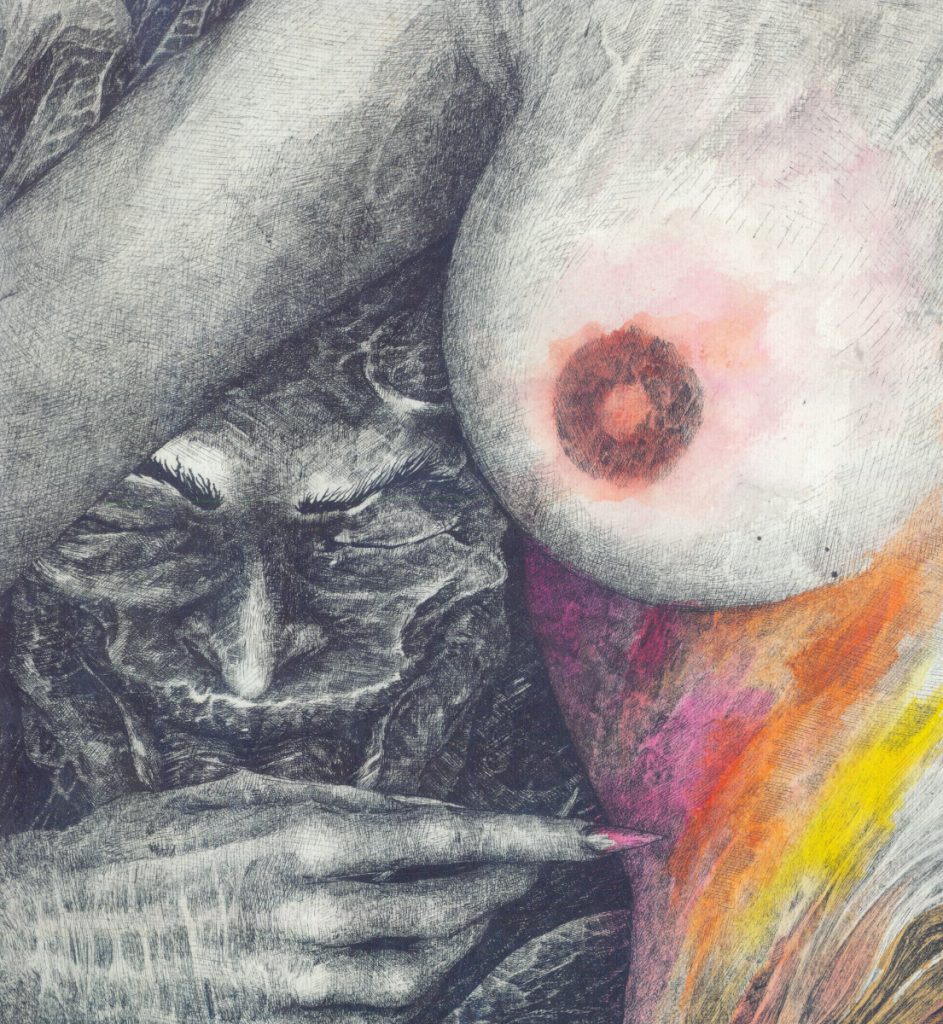
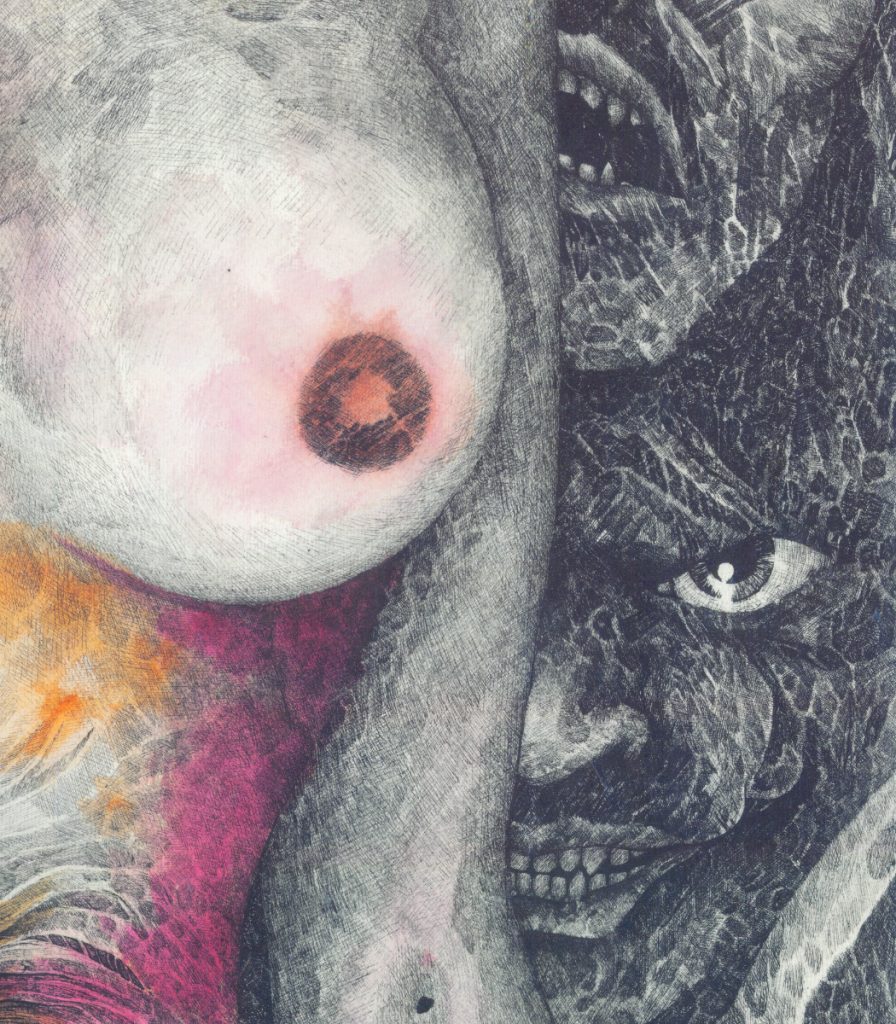
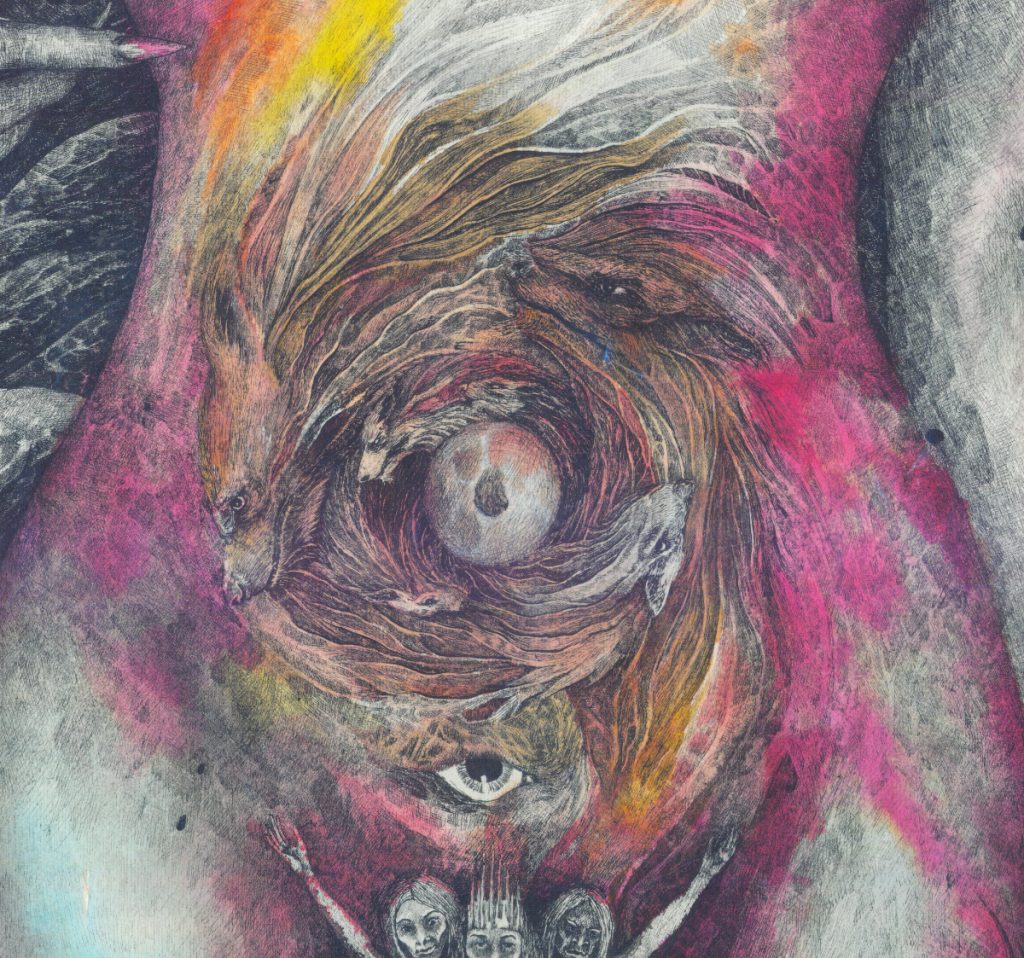
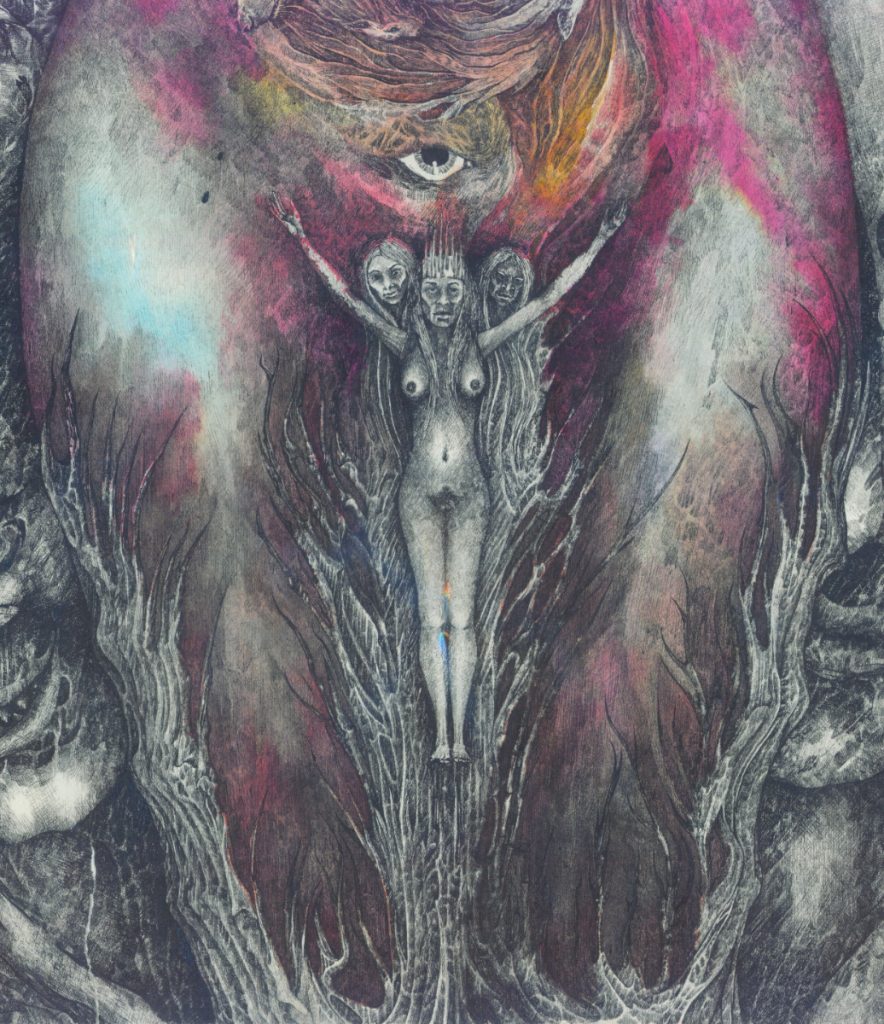
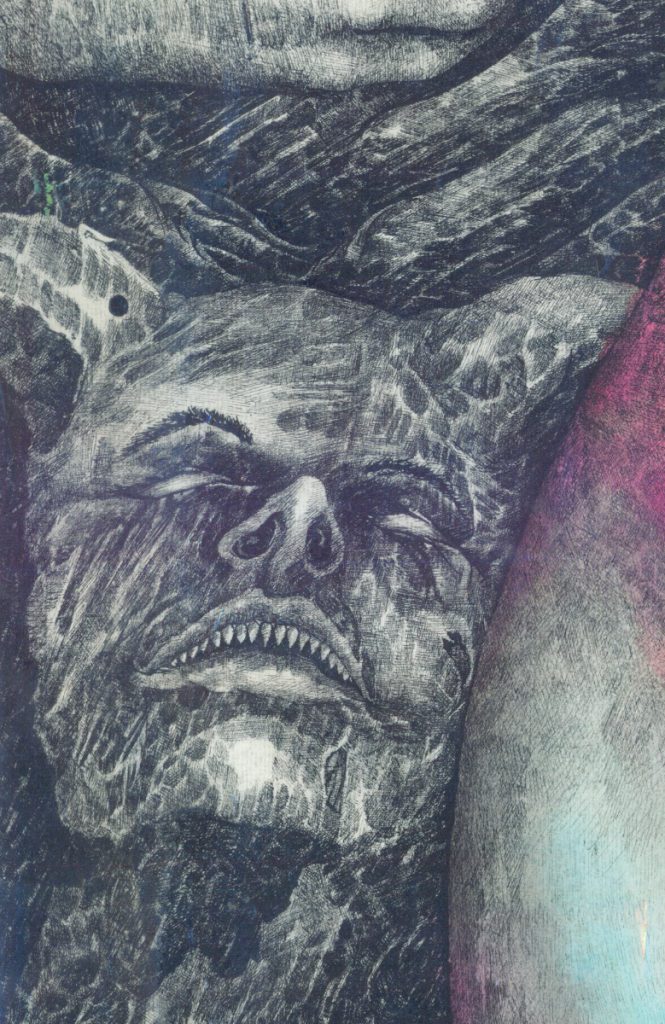
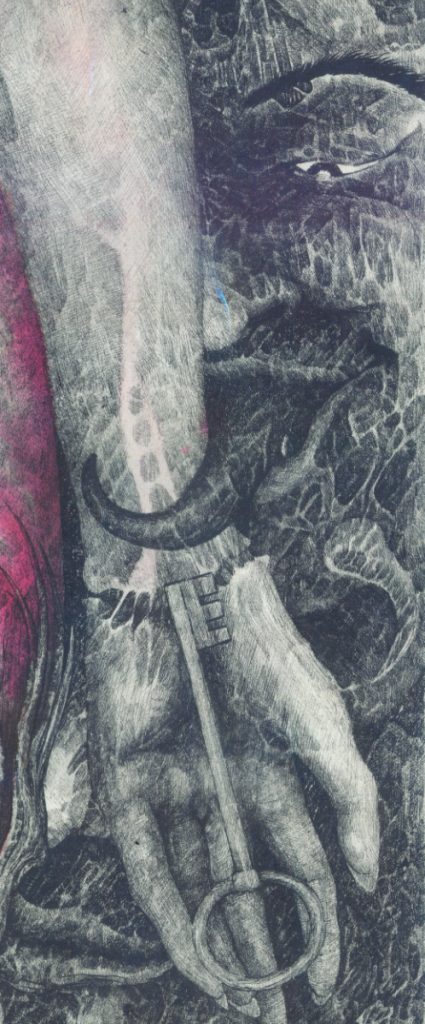
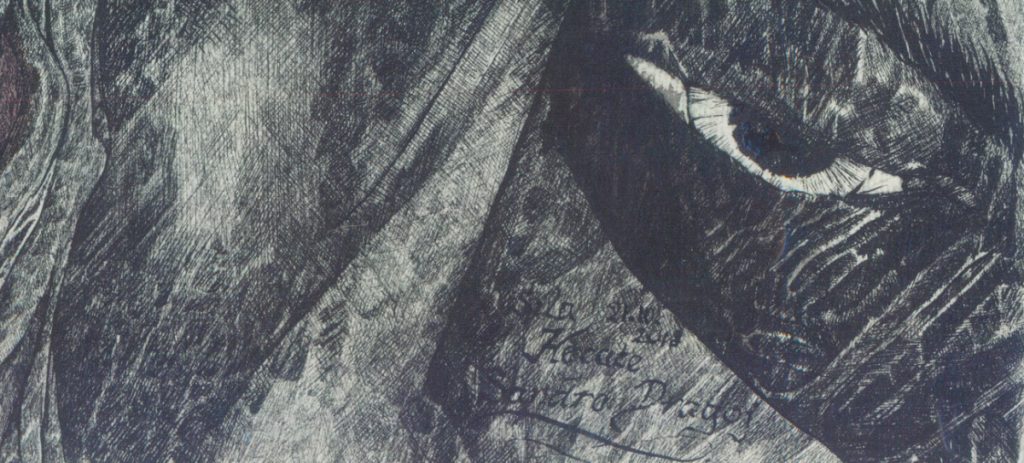
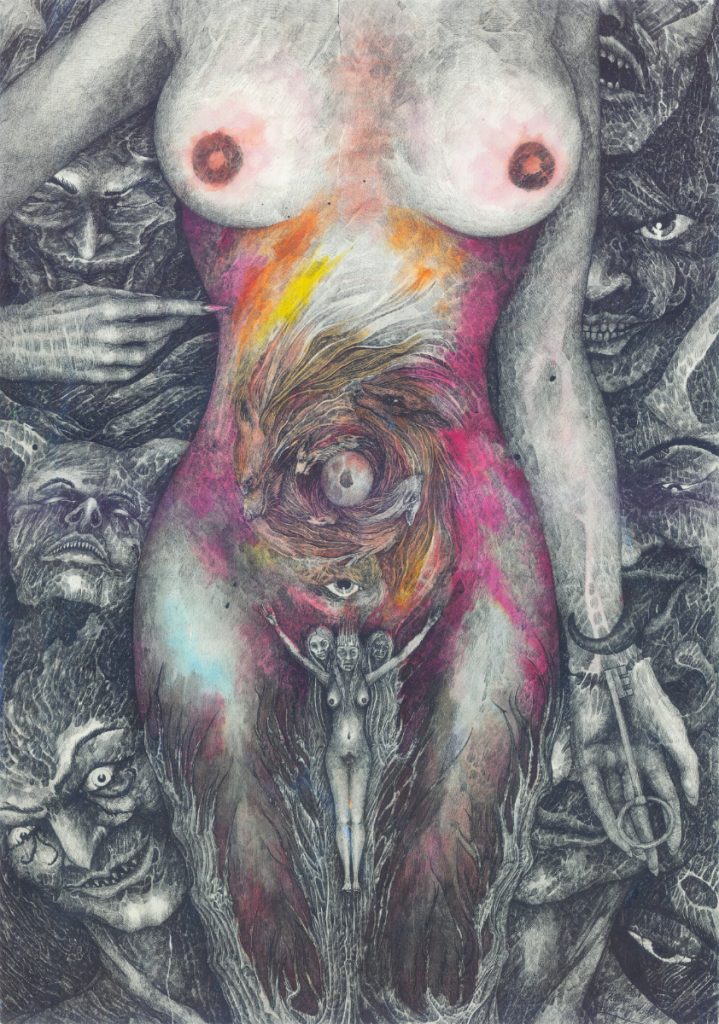
“It is easier to think and live as a sinner in a land of divine benevolence than to recognize and admit that we live in a land ruled by a tyrant, a false god, and a despot.”
I have noticed that people tend to submit to authority without resistance simply when they make it clear that they have power, weapons, and banditry practices, even if declaring that they have no intention of using them at the time. This is working through fear. Tyrannical authorities have a habit of aggrandizing their own reputations and imposing that vision on others. In Christian dogma, to which I am mostly referring here, the archetype of God is worshiped as something supreme, yet judgmental. Which makes no sense. Assuming the existence of an ultimate superpower and the notion that out of the entire universe it has a preference for humans in particular, such a superpower principally can’t have a single motive for judging humans – on the contrary, it can only remain in the role of a disinterested observer without any intentions. Therefore, we are facing the absence of a divine plan.
In this work, I emphasize strongly that things or qualities opposing the authoritarian approach can be dogma-breaking but can as well be the mere expression of free self-development without any revolutionary intentions. The latter also gets stigmatized or even demonized. This is one of the reasons why I like to express nice things in the least pleasant hellish form. It’s a kind of a sign of self-acceptance and de-tabooing of subjects with their shadow sides, of which artwork offers a better understanding.
Development of the artwork
This drawing was difficult, partly because of inappropriate choice of the base material, which in this case was handmade paper. It was supposed to be a quality material suitable for photographic prints, but it did not work out. The paper wrinkled, tore, and suffered serious damage. But I took it as a challenge and finished the work anyway, bringing the setbacks and defects to the forefront. I said to myself that we go through many setbacks in our lives and we need to learn from our numerous mistakes. What if something similar could be seen in a work of art? So I kept it this way.
The rest of the process was easier. I went on drawing, and drawing, and drawing.
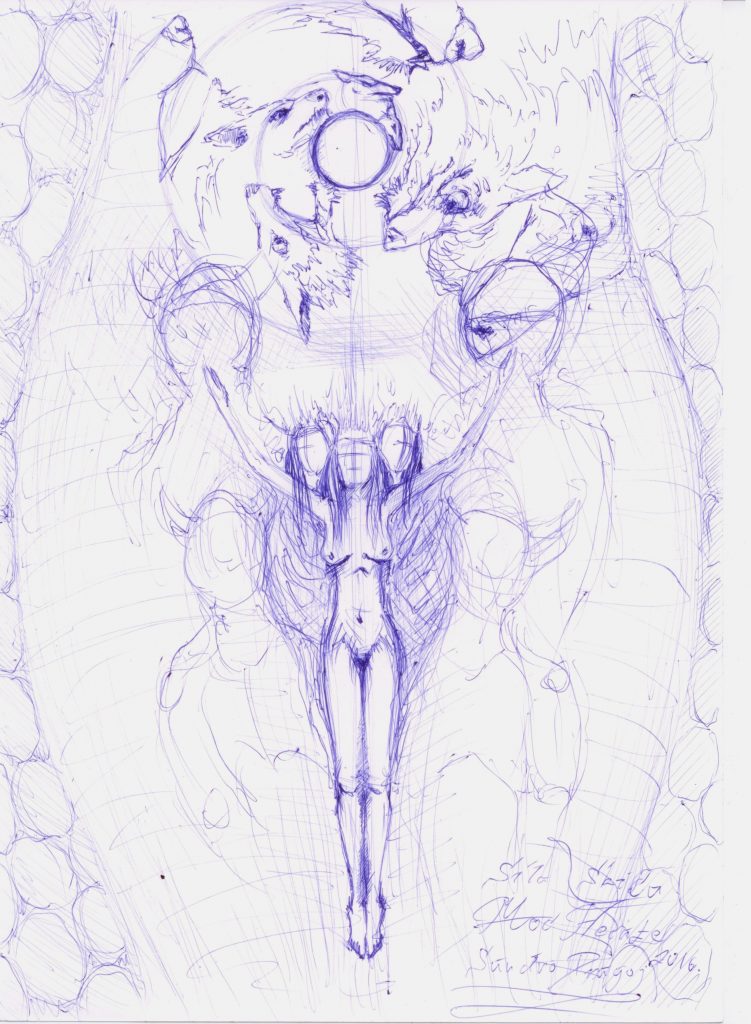
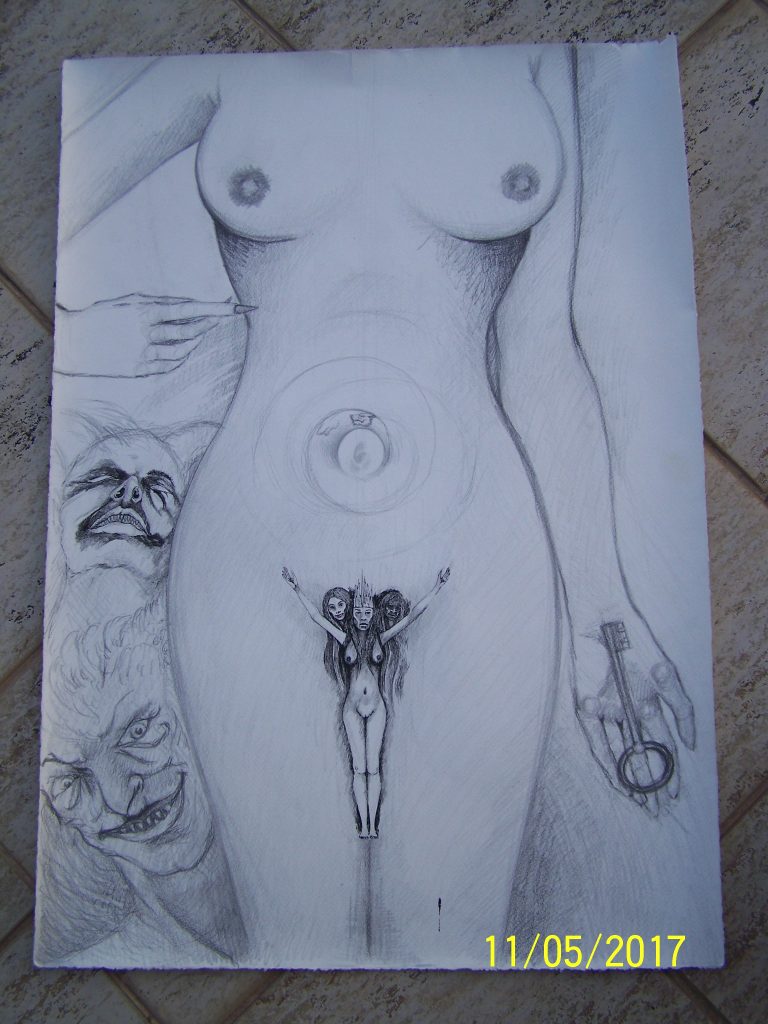
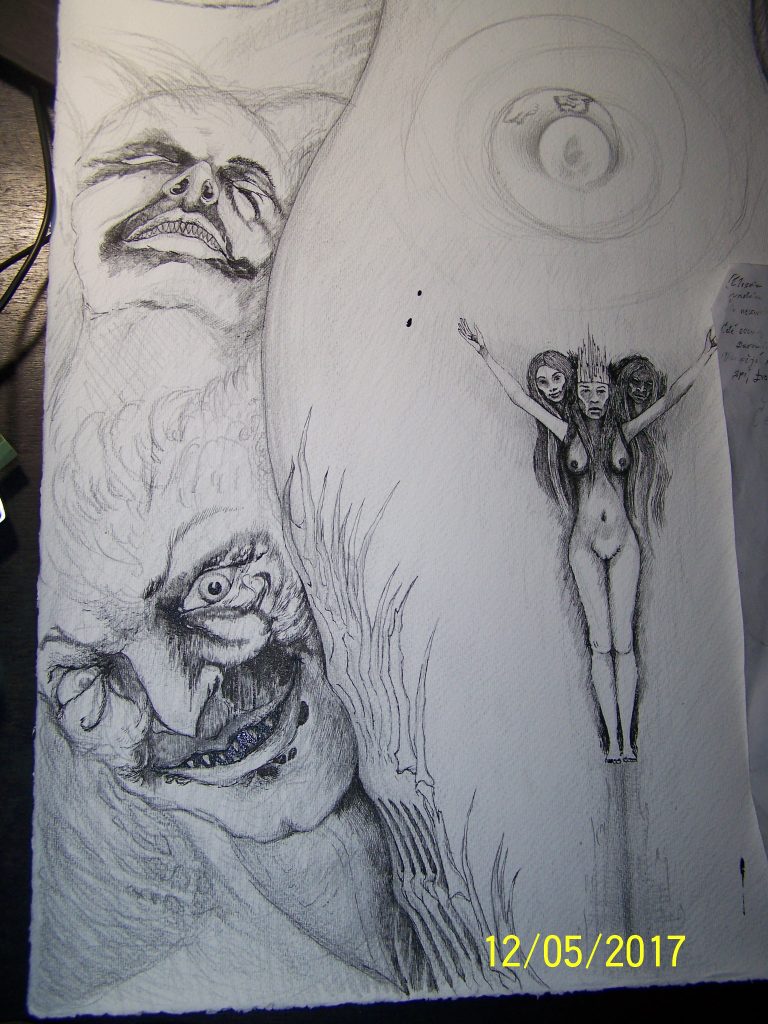
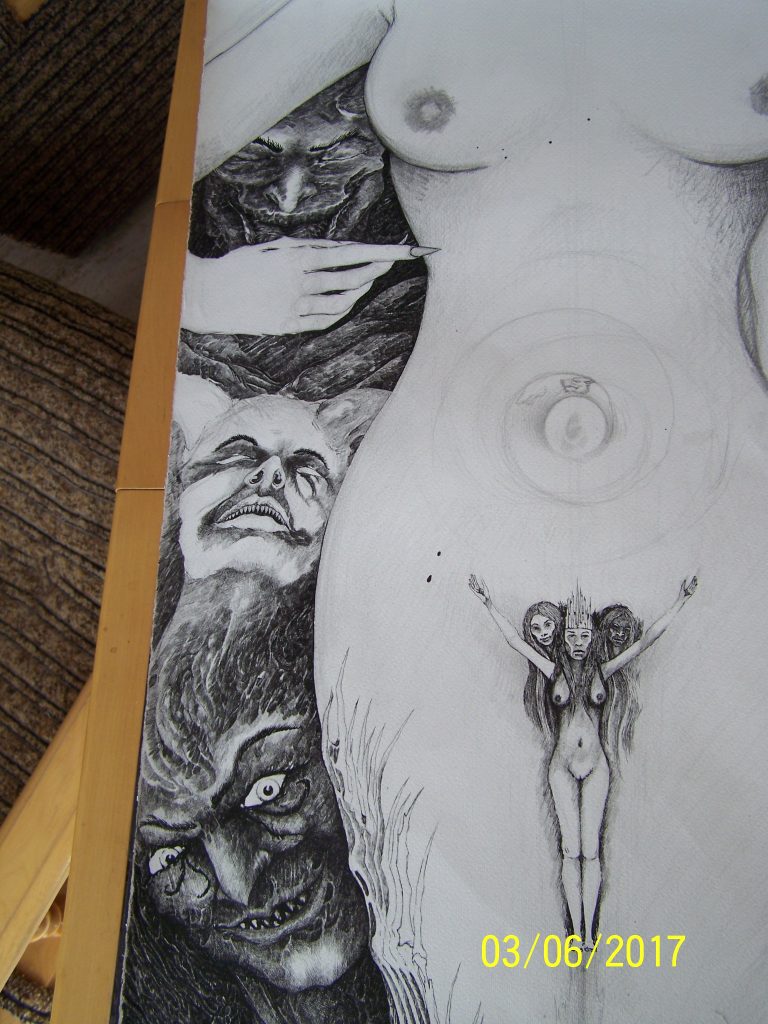
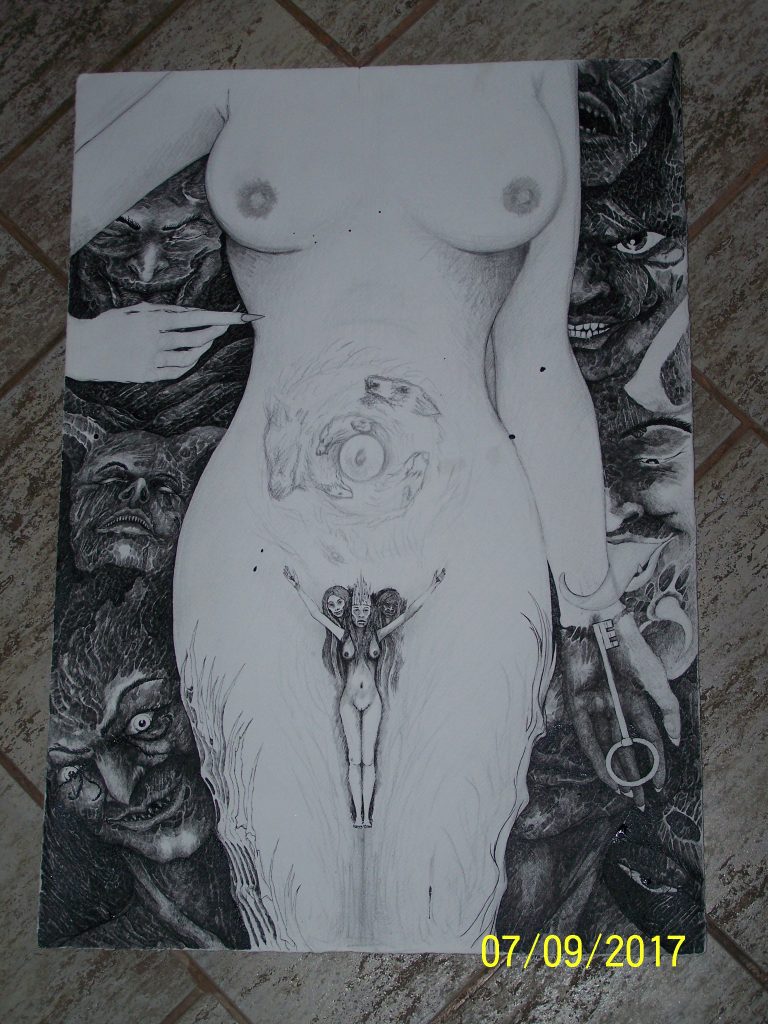
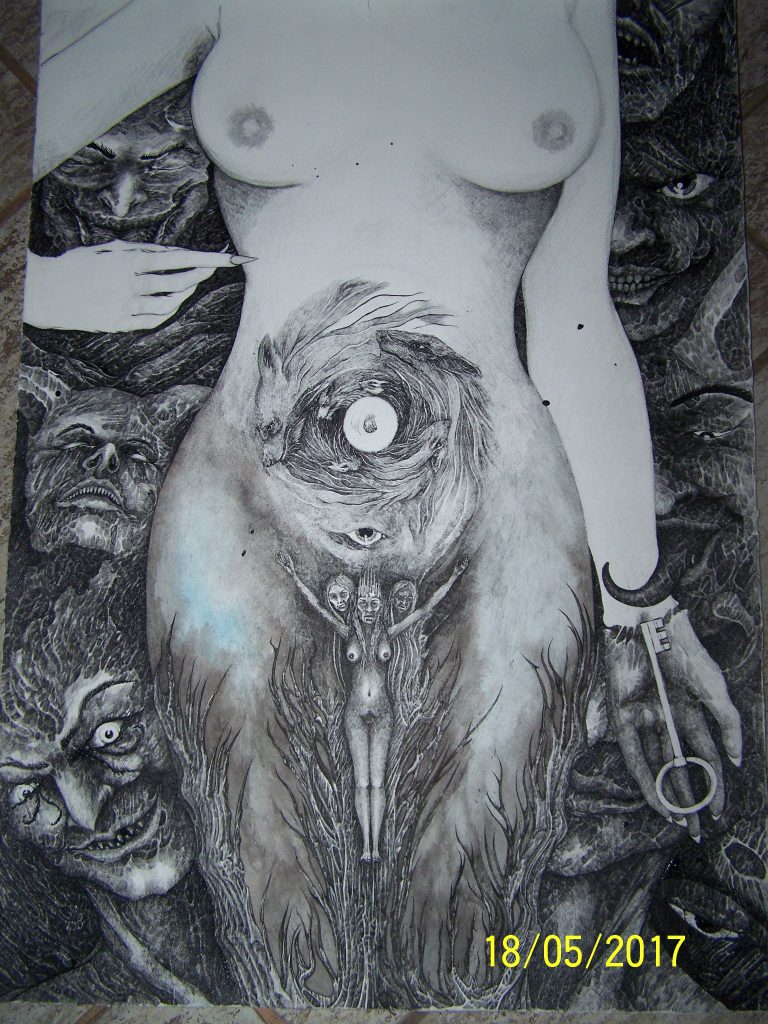
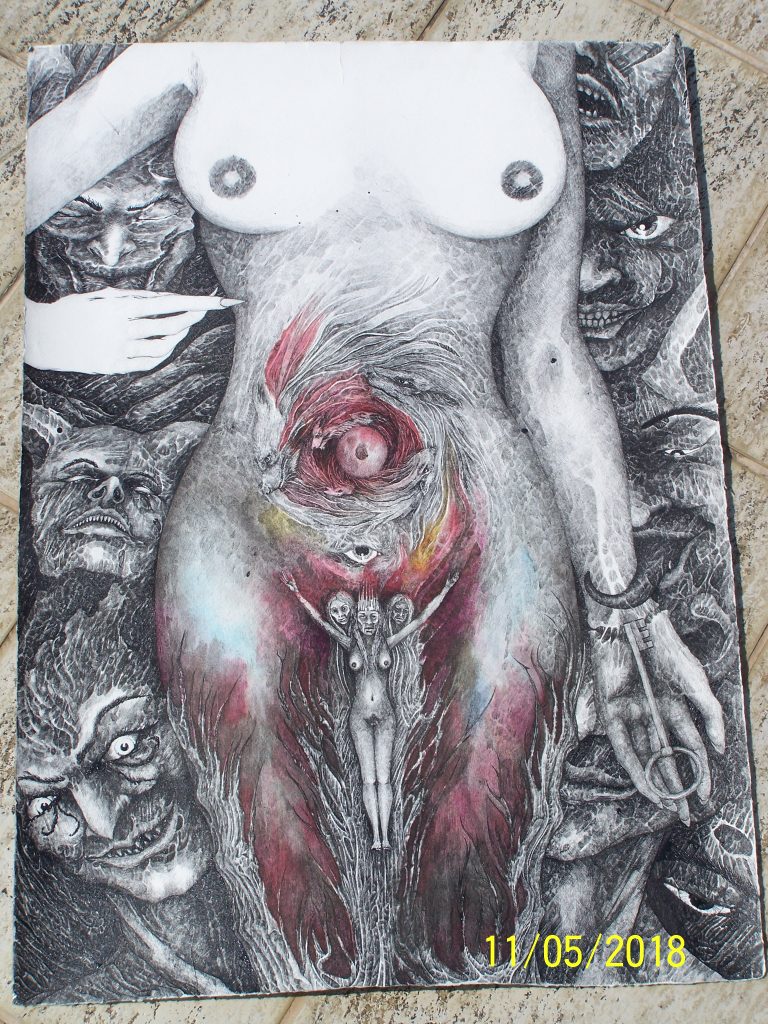
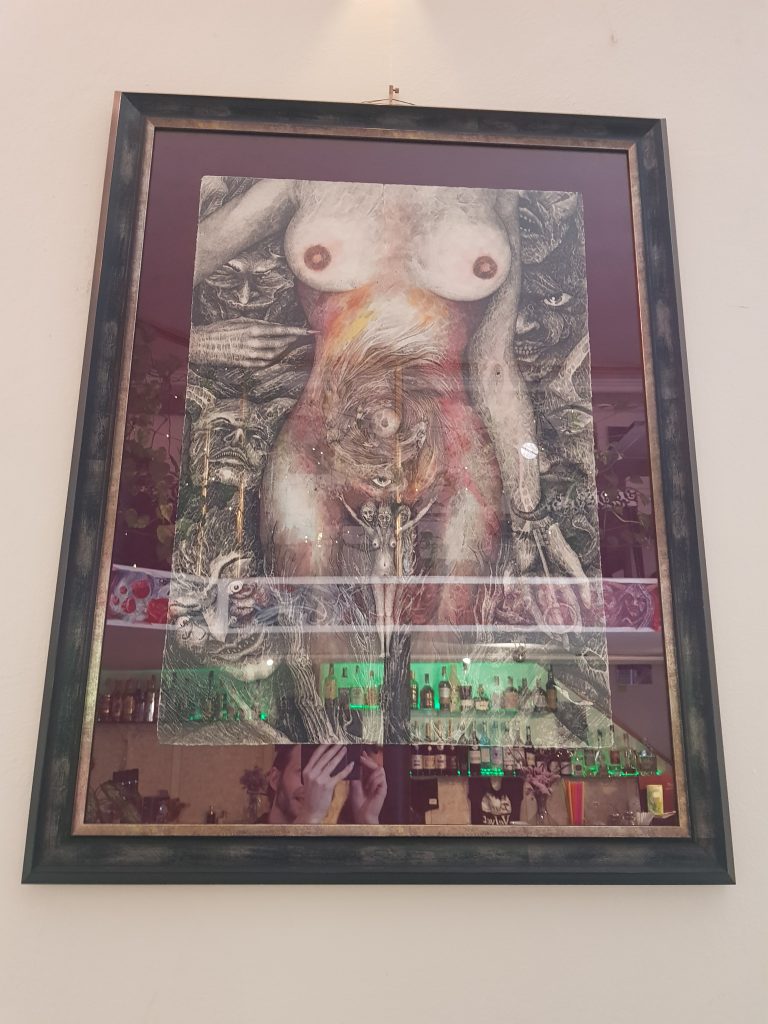
proofreading / editing: Arianne Perrier
web design: Brbla
